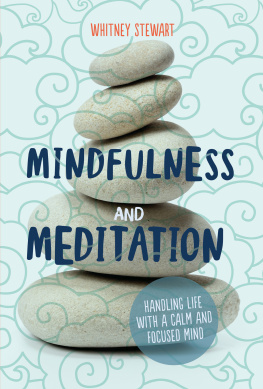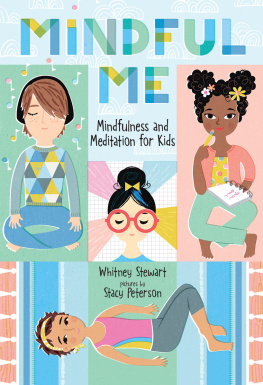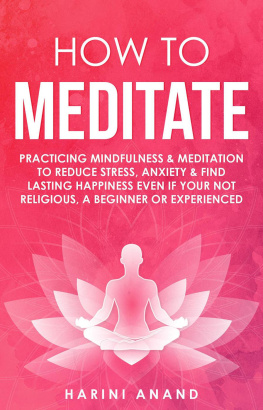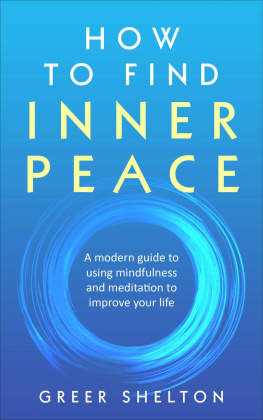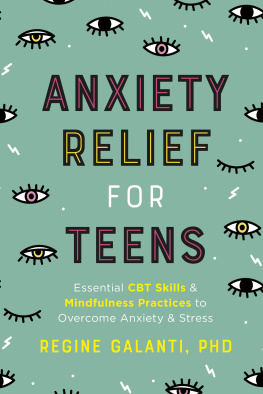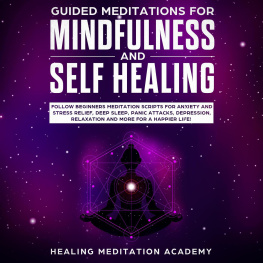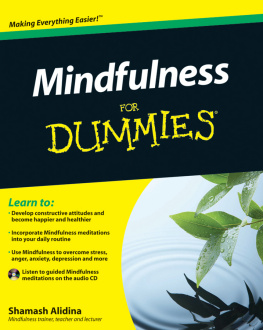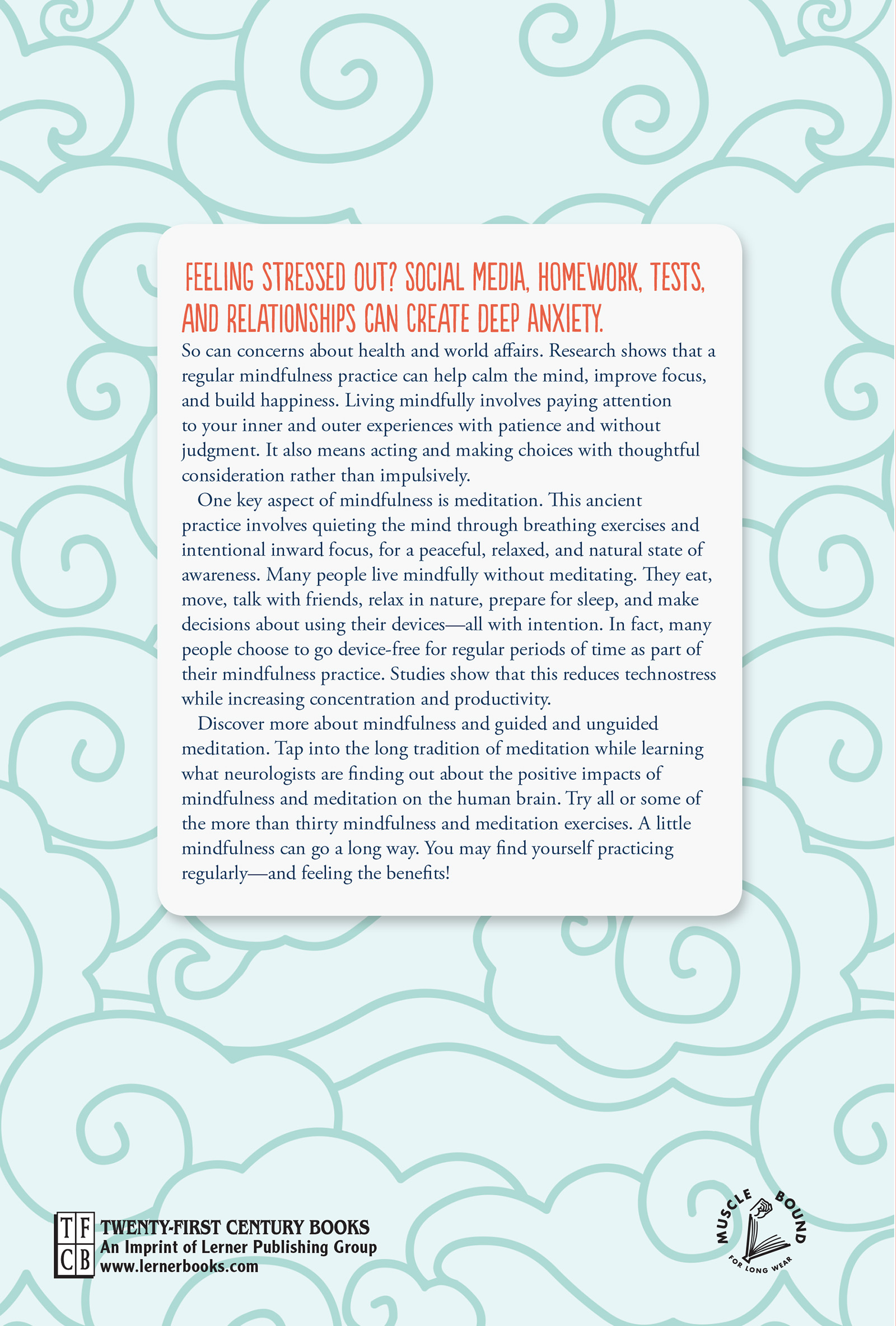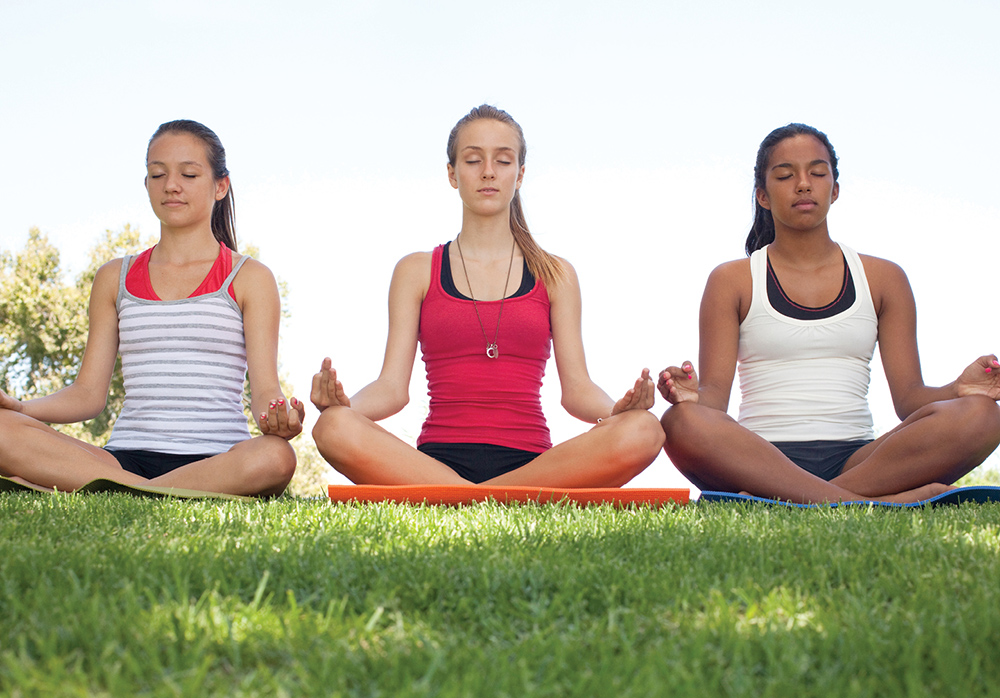To my niece Maggie Stewart, for her wisdom and courage
I extend my gratitude to my teachers and mindful friends whose wisdom and kindness helped me to become a happier and more balanced person. In particular, I would like to thank His Holiness the Dalai Lama, Venerable Khenchen Gyaltsen, Venerable Drupon Samten, Geshe Rinchen Choegyal, Fleet Maull, Kate Crisp, Gina Biegel, and Helen Maffini. Thanks also to Elizabeth Kahn, Judi Holst, Sally Rippin, Dominic Caputo, Marni Becker-Avin, Adam Avin, and all the teens I interviewedmany of whom asked me to change their names for privacyand to my husband and son, Hans and Christoph Andersson, for their enduring support. To the readers of this book, I dedicate the merit of mindfulness to you.
Text copyright 2020 by Whitney Stewart
All rights reserved. International copyright secured. No part of this book may be reproduced, stored in a retrieval system, or transmitted in any form or by any meanselectronic, mechanical, photocopying, recording, or otherwisewithout the prior written permission of Lerner Publishing Group, Inc., except for the inclusion of brief quotations in an acknowledged review.
Twenty-First Century Books
An imprint of Lerner Publishing Group, Inc.
241 First Avenue North
Minneapolis, MN 55401 USA
For reading levels and more information, look up this title at www.lernerbooks.com.
Main body text set in Adobe Garamond Pro Regular.
Typeface provided by Adobe Systems.
Library of Congress Cataloging-in-Publication Data
Names: Stewart, Whitney, 1959 author.
Title: Mindfulness and meditatio n : handling life with a calm and focused mind / Whitney Stewart.
Description: Minneapolis, M N : Twenty-First Century Books, [2019 ] | Audience: Age: 1418 . | Audience: Grade 9 to 12 . | Includes bibliographical references and index.
Identifiers: LCCN 2018038797 (print ) | LCCN 2018053737 (ebook ) | ISBN 781541562707 (eb pdf ) | ISBN 781541540217 (l b : alk. paper)
Subjects: LCSH: Stress management for teenagersJuvenile literature . | Mindfulness (Psychology)Juvenile literature . | MeditationJuvenile literature.
Classification: LCC BF724.3.S86 (ebook ) | LCC BF724.3.S86 S74 2019 (print ) | DDC 155.5/182dc23
LC record available at https://lccn.loc.gov/2018038797
Manufactured in the United States of America
1-45225-36608-1/16/2019
Contents
When Life Came Crashing Down
I started high school confident, athletic, and intellectually curious. When I wasnt tossing a ball or rock climbing, I tried out for plays or studied. I was motivated and college-bound. My school asked me to speak at an alumni day. So, as a freshman, I stood before adults and spoke about individualism. I thought I was wise and could handle anything.
I was wrong.
In tenth grade, I had knee trouble and couldnt keep up on varsity lacrosse team runs. I went to a surgeon, who told me that if I quit competitive sports, I would still be walking at the age of forty. If not, Id probably be in a wheelchair. I didnt think I had much of a choice, so I quit. After that, my field hockey and lacrosse coach, who had paid so much attention to me as a promising freshman, ignored me. My teammates were busy with practice, so I also lost my pack of friends. Instead of seeing myself as strong and dynamic, and using my energy in hard workouts, I sat around and felt like a quitter. The more I imagined myself that way, the weaker I became. I stopped eating well and spent time studying alone and feeling stressed out. My mind was always racing, and I couldnt sleep. I didnt know whom to talk to or how to admit my troubling thoughts and feelings.
Adding to my stress was family turbulence. Several family members battled alcoholism or drug addiction, and I was sexually assaulted and didnt know how to talk about it. I was ashamed to tell anyone and afraid of the consequences of doing so. Life felt like one long string of crises, and I was always on guard, expecting the worst.
Then I saw a sign for a yoga class. Back then, in the 1970s, many people thought yoga was weird or radical, but I decided to try it. I immediately loved this form of moving meditation; it helped me feel inner peace, at least some of the time. I was sixteen and my life started to shiftever so slowly. I dont mean that a few yoga classes took away my problems. They didntnot by a long shot. Chaos at home continued. Pressure to do well in school continued. And I was hard on myself.
As a young writer in the 1980s, I spent time in Asia and learned how to meditate. Back home, I began to meditate regularly and learned to sit more comfortably with my difficult emotions. Through this practice, I began to question my negative thoughts and to accept things I couldnt control. I gradually learned to relax more and to trust change and uncertainty.
But my story is only one of many. We all need ways to deal with our emotions and challenges. Sometimes that feels impossible. I wrote this book as a guide to finding a way to inner balance. We may not be able to change other people or circumstances, but we can change ourselves. If youre ready to work with your mindand heartmindfulness can get you started.
Mind Training:
Practice and More Practice
M atthieu Ricard doesnt call himself the happiest man in the world, but many other people do. Its absurd, he says of his nickname, explaining that he knows happier people. I dont see everything as rosy, Ricard says, but the ups and downs of life dont unsettle me in the usual way. Ricard, who was born in France, holds a PhD in molecular genetics. But he gave up his scientific career. Instead, he studied Buddhism, an ancient Asian religion, and became a Buddhist monk, a writer, and a photographer. Ricard lives in Nepal, where he runs an organization that provides health care, education, and social services to poor children. He also practices and writes about meditation, a mental discipline of staying focused and alert and resting the mind in a calm, relaxed, and natural state of awareness.
Studies reveal that people who meditate every day display increased activity in parts of the brain associated with happiness, focus, and memory.
In 2008 Ricard collaborated with Richard Davidson, a professor of psychology and psychiatry at the University of WisconsinMadison and director of the universitys Center for Healthy Minds. Ricard allowed Davidson to attach 256 sensors to his scalp. Then, using an instrument called an electroencephalograph, Davidson measured the electrical impulses in Ricards brain while he meditated. Davidson also scanned Ricards brain during meditation using a technology called functional magnetic resonance imaging.
These analyses revealed that when Ricard focused his mind in meditation, the level of gamma waves in his brain were off the chartsno scientists had ever recorded such high levels. Gamma waves, the fastest of all brain waves, are linked to focus, information processing, and memory. During meditation, Ricard also demonstrated high levels of activity in his left prefrontal cortex, an area of the brain thats linked to happiness. The study provided evidence that meditation affects the brain in positive ways.
The more you meditate, the stronger the lasting traits become.... We see it in cognitive changes. We see it in behavioral changes. And most importantly, we see it in neurological changes.... Right from the beginning [of meditation practice] there are attentional benefits. There are stress benefits. Youre more resilient under stress.

